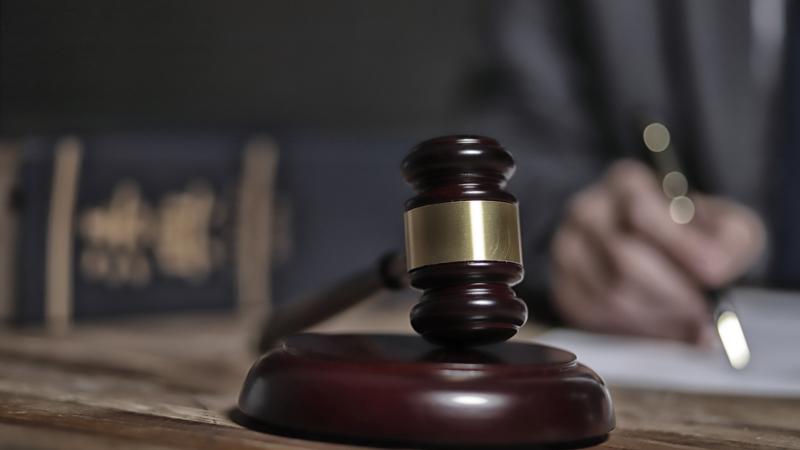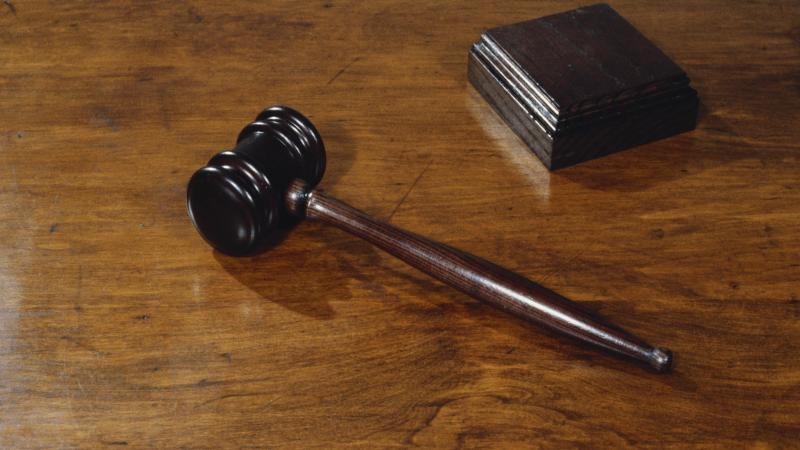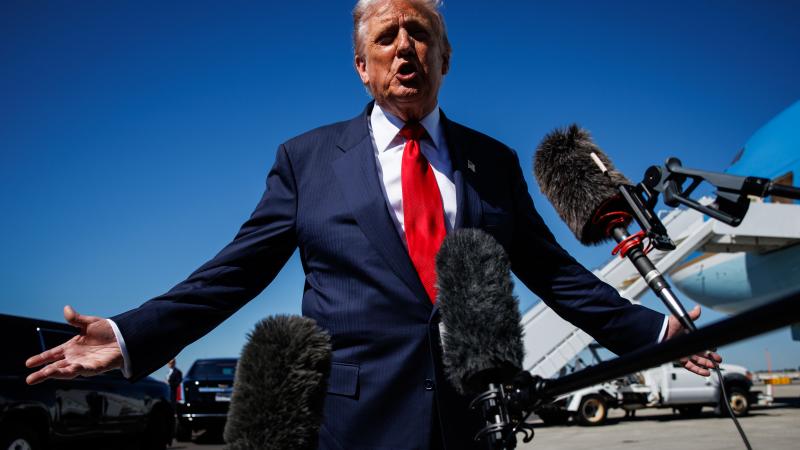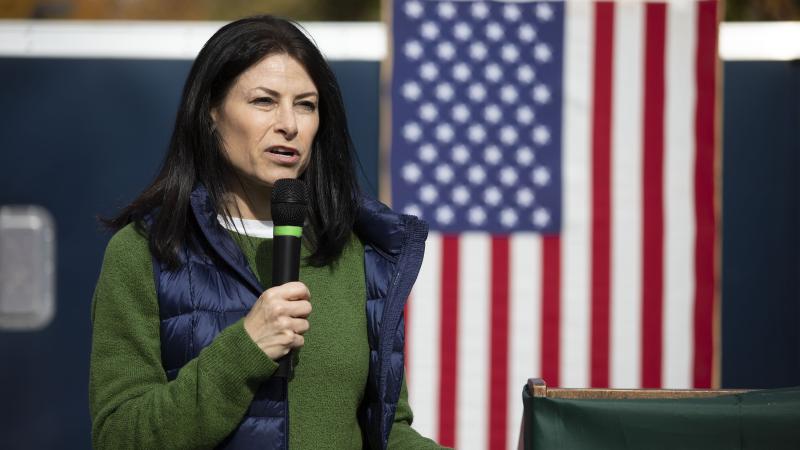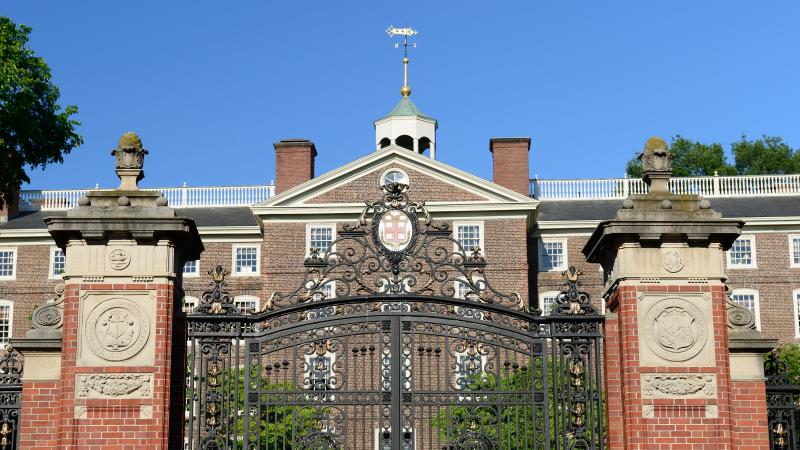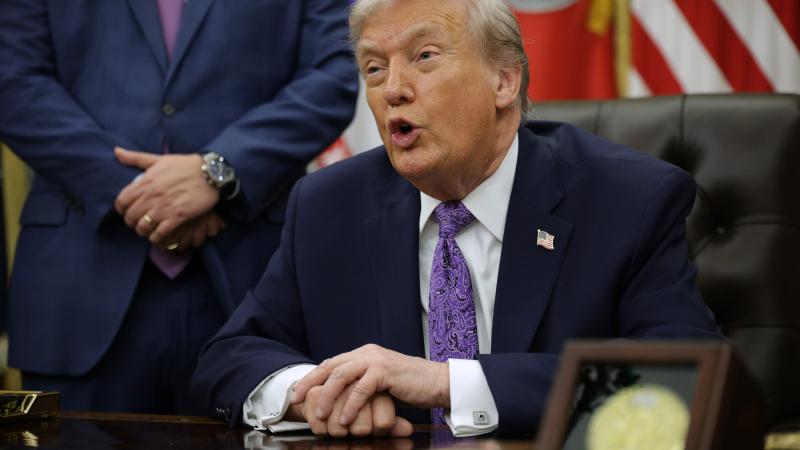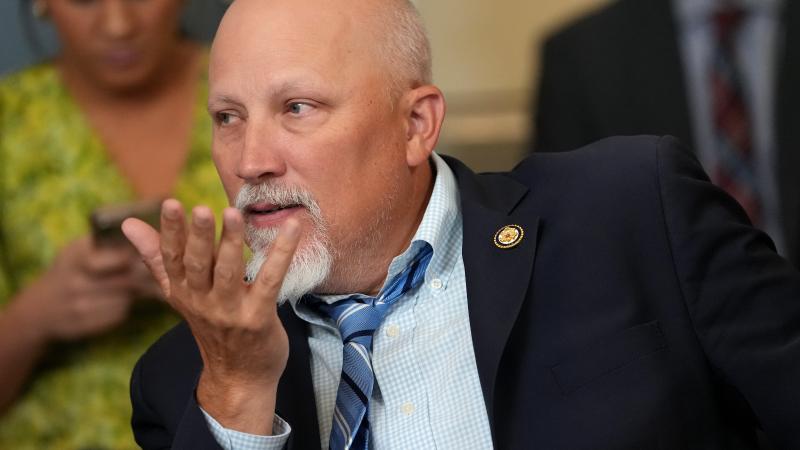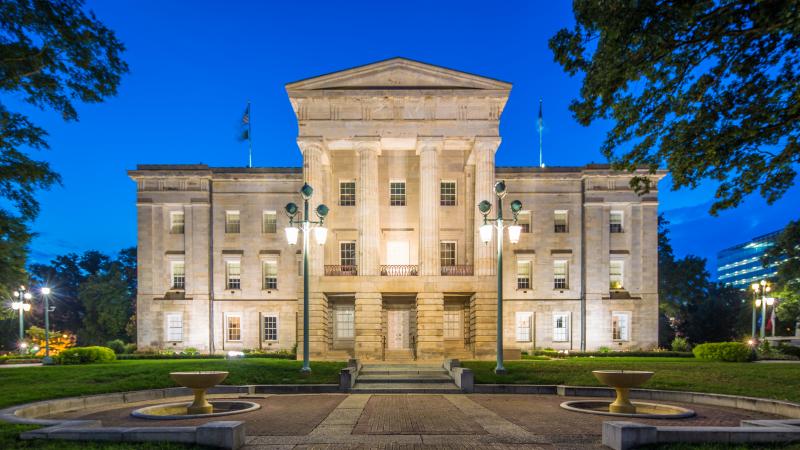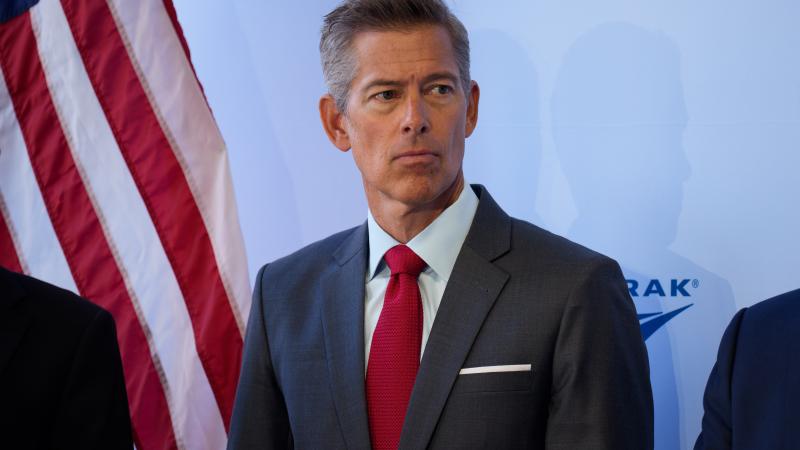Halligan defends handling of Comey grand jury indictment, claims magistrate omitted key context
The Justice Department is pushing back against criticism of its handling of the prosecution of James Comey as the fired FBI director seeks to convince judges to throw out the case before it can go to trial.
Interim U.S. Attorney Lindsey Halligan is defending her handling of the grand jury proceedings, which resulted in two criminal charges against fired FBI Director James Comey, in the wake of critiques from a magistrate judge and probing questions Wednesday from the federal judge presiding over the case.
Halligan, who was selected by Trump in September to serve as the top prosecutor for the U.S. attorney’s office in the Eastern District of Virginia, pushed back on multiple criticisms in Wednesday evening court filings, telling the federal judge that “the grand jury was provided the proposed indictment, deliberated, and determined that probable cause existed to believe that the defendant had committed the crimes charged in two counts” and claiming that the magistrate judge had misrepresented her comments before the grand jury and that his opinion attacking the Comey case should be set aside.
The DOJ’s two-count indictment, approved by a federal grand jury in northern Virginia in late September, stemmed from allegations that Comey misled the Senate during his testimony in late September 2020, when he reiterated his May 2017 denial that he had never authorized a leak of information to the media about the Trump-Russia investigation or Clinton-related investigations, when the DOJ says he in fact authorized his friend, confidante, and special government employee Dan Richman to leak to the media about the FBI’s Hillary Clinton investigation. The indictment also alleged that Comey had obstructed Congress by lying to the Senate.
The foreperson for the grand jury told the judge in September that, in addition to approving the two charges, “grand jurors did not concur in finding an indictment in this case” related to a third count — the DOJ’s allegation that Comey had also lied when he claimed before the Senate in September 2020 that he did not remember the CIA referral about the Clinton Plan intelligence.
Halligan confirmed in federal court on Wednesday that, after the grand jury had rejected one of the three counts against Comey on September 25, the indictment was rewritten that day to include only the two approved charges and to omit the one rejected charge, and that she presented that revised indictment to the grand jury foreperson and one other grand juror — rather than presenting it again to the full grand jury — before providing the indictment to a magistrate judge. The magistrate was given both versions of the indictment — the original one with the rejected count included and the revised one with the rejected count omitted — and the jury foreperson said on the record that the grand jury had approved two counts only.
One of Comey’s lawyers, Michael Dreeben, a former member of special counsel Robert Mueller’s Trump-Russia investigation, claimed in court on Wednesday that the revelation by Halligan meant that there was no legitimate indictment against his client.
Judge Michael Nachmanoff, the presiding judge who was nominated to the bench by then-President Joe Biden and confirmed by the Senate in 2021, ordered that the Justice Department provide answers about this matter by Wednesday evening.
Halligan and her fellow prosecutors argued in court on Wednesday that nothing untoward had occurred with the way the Justice Department had obtained its two-count indictment against Comey, and they expanded upon that in a court filing Wednesday evening.
On Monday, Magistrate Judge William Fitzpatrick, a veteran of the same U.S. attorney’s office in Virginia, issued an opinion harshly criticizing what he saw as Halligan’s mishandling of the grand jury process in late September, accusing her of misleading the grand jurors and concluding that grand jury materials should be handed over to Comey’s defense team.
In a separate Wednesday evening court filing, Halligan and the DOJ prosecutors pushed back on those contentions as well.
Comey, fired as FBI director in 2017 by President Trump, oversaw the politicized investigation into Clinton's use of a private email server to send classified information and the Trump-Russia collusion inquiry.
The charges against him were brought by Halligan, the former personal Donald Trump lawyer and White House aide, who was sworn-in in September shortly before obtaining the indictments against Comey.
The two-count indictment controversy in court
The successful indictment specified two counts: False statements within the jurisdiction of the legislative branch of the United States Government (18 U.S.C. § 1001(a)(2)) and Obstruction of a Congressional proceeding (18 U.S.C. § 1505).
Nachmanoff, the Biden appointee, asked Halligan in court on Wednesday whether grand jurors were present when the original three-count indictment — with one of the charges having been rejected — along with the revised two-count indictment were presented to a separate magistrate judge on Sept. 25.
“The foreperson and another grand juror was also present,” Halligan told the court, according to Politico.
Halligan said that the narrower two-count indictment was reviewed by the grand jury's foreperson in addition to another grand juror, and that it accurately reflected the two counts that the grand jury had indeed approved while omitting the charge that had been rejected.
"Well,” Nachmanoff simply responded, according to ABC News.
Nachmanoff said he wanted to clarify whether the final two-count indictment had been seen by the full grand jury, and Halligan said it had not.
Assistant U.S. Attorney Tyler Lemons, who has been assisting with the Comey prosecution, insisted to Nachmanoff that there was nothing wrong with the handling of the replacement indictment, contending that “they really had no other way to return it.”
Lemons said that the two-count indictment was not in fact a new indictment compared to the three-count indictment, contending that it simply had been revised to accurately show that the grand jury had approved one count of lying to Congress and one count of obstruction, rather than two counts of lying to Congress and the obstruction count, according to CBS News.
“The new indictment wasn’t a new indictment,” Lemons said according to the Washington Post.
Comey’s lawyer, Dreeben, took the opportunity to argue in court that “there is no indictment,” according to Politico, contending that the saga was “tantamount to a complete bar” a prosecution of his client.
"The EDVA Grand Jury coordinator informed the undersigned that the grand jury foreperson informed her they had returned a true bill as to counts two and three, and not as to count one," the DOJ said in a Wednesday evening court filing explaining the saga. "The coordinator was informed by the Deputy Criminal Chief to amend the indictment by removing the text of former count one, and moving the remaining counts, two and three, to reflect as counts one and two. The grand jury coordinator then returned to the grand jury room and presented the corrected indictment to the grand jury foreperson and the deputy foreperson."
Halligan argues there was no wrongdoing in obtaining and presenting two-count indictment
Halligan and her office on Wednesday evening issued a response to the judge’s bench order asking for a fuller explanation, with the DOJ arguing that “the Court on November 19, 2025, ordered the parties to submit briefs regarding the effect, if any, of Gaither v. United States on this prosecution” and that “Gaither does not require dismissal of this Indictment.”
“On September 25, 2025, the U.S. Attorney presented a proposed three-count indictment to the grand jury. The foreperson of the grand jury ‘reported that 12 or more grand jurors did not concur in finding an indictment’ as to proposed ‘Count 1 only.’ Consequently, the foreperson signed an indictment that contained only the two counts for which the grand jury had determined that probable cause existed to indict,” Halligan said in her court filing.
“The two charges contained in that indictment are identical to the second and third charges that were included in the proposed indictment that was provided to the grand jury. Only the numbering of the counts (i.e., proposed Count Two became Count One, and proposed Count Three became Count Two) and the paragraphs differ. Given that the grand jury was presented with the two counts on which it voted to return an indictment and in fact voted upon those counts, Gaither does not require dismissal.”
She also wrote, “The suggestion that Gaither requires a successive vote by a grand jury that has voted to return an indictment on at least one count but not others – or that a grand jury is required to return an indictment reflecting a count on which the grand jury did not find probable cause to indict – finds no support in either Rule 6 of the Federal Rules of Criminal Procedure or in Gaither itself.
“The grand jury in this case did in fact find that probable cause existed to support the crimes charged in the indictment that was returned. And by doing so, they demonstrated that no reasonable possibility exists that the grand jury would not have approved of that indictment, since the grand jury did in fact approve of the charges in the indictment.
“Here, the Court has sought clarification as to what occurred with the Grand Jury. The record shows that a duly constituted grand jury considered the presented indictment and returned a true bill as to only Counts Two and Three,” Halligan concluded. “Considering Gaither and controlling Supreme Court and Fourth Circuit precedent, the government course of conduct here was permissible and proper. The Grand Jury foreperson, as the representative of the Grand Jury, endorsed the revised two count Indictment by signing it and explaining on the record in open Court that the Indictment reflected the vote of the Grand Jury. The Constitutional function and purpose of the grand jury, in all possible respects, was achieved and respected in this Indictment.”
Andrew McCarthy, a former federal prosecutor who has often been critical of the DOJ’s prosecution of Comey, wrote for National Review on Wednesday that “there is no reason to believe the no true bill was improperly executed by the grand jury; it indicates that two counts were approved” and that “all the second document does is, word for word, repeat the two approved counts, while omitting the count the grand jury rejected.”
McCarthy said he believed there were problems with the case but that “I don’t believe that the unusual genesis of the two-count indictment document is one of them.”
Magistrate judge argued to give Comey access to grand jury info
Fitzpatrick, a magistrate judge assisting the U.S. District Court for the Eastern District of Virginia with the case, issued an opinion on Monday blasting Halligan’s handling of the case and arguing that Comey should be given access to grand jury information.
He was sworn in as a magistrate judge in the Alexandria division in May 2022, and previously worked for the Justice Department for many years, including multiple stints at the U.S. Attorney’s Office for the Eastern District of Virginia for a couple of years starting in 1998 and then returning there again in 2019, when he became the chief of the financial crimes and public corruption unit for the office.
Comey’s lawyers have been fighting for access to grand jury materials in their efforts to dismiss the case, and Fitzpatrick on Monday issued an opinion stating that Comey should get what he was seeking.
“The Court finds that the institutional concerns for grand jury secrecy are greatly outweighed by Mr. Comey’s right to Due Process,” Fitzpatrick said Monday in a opinion, adding that “the Court recognizes that the relief sought by the defense is rarely granted. However, the record points to a disturbing pattern of profound investigative missteps, missteps that led an FBI agent and a prosecutor to potentially undermine the integrity of the grand jury proceeding. … The defense request for all grand jury materials is granted.”
Fitzpatrick also contended in his opinion that “the Court has identified two statements by the prosecutor to the grand jurors that on their face appear to be fundamental misstatements of the law that could compromise the integrity of the grand jury process.” The two alleged statements were redacted, because they occurred in a grand jury proceeding, but they were characterized by Fitzpatrick.
The magistrate claimed that one statement by Halligan was “a fundamental and highly prejudicial misstatement of the law that suggests to the grand jury that Mr. Comey does not have a Fifth Amendment right not to testify at trial.”
Fitzpatrick argued that another statement by Halligan “clearly suggested to the grand jury that they did not have to rely only on the record before them to determine probable cause but could be assured the government had more evidence — perhaps better evidence — that would be presented at trial.”
Halligan contends magistrate misrepresented her comments and argues against giving Comey the grand jury info
Halligan and her DOJ team filed a Wednesday evening response pushing back on Fitzpatrick’s contentions.
The federal prosecutor argued that he had not accurately characterized her comments to the grand jury.
“The magistrate judge asserts that the U.S. Attorney implied Mr. Comey lacked a Fifth Amendment right not to testify. The complete transcript demonstrates the opposite. The U.S. Attorney issued a single, continuous explanation of how trial testimony differs from the grand jury's function, and the magistrate judge's attempt to split that explanation into two disconnected ‘statements’ produces a meaning that simply is not present in the actual text,” Halligan’s court filing said.
Halligan continued: “The portion the magistrate judge omitted is dispositive. The U.S. Attorney expressly refocused the grand jury on its limited role and told them not to concern themselves with trial testimony. The instruction is clear, direct, and completely incompatible with the magistrate judge's conclusion. … Here, the critical contextual language was not addressed. At a minimum, the magistrate judge's failure to account for this critical passage renders the analysis unsound. No court can deem a prosecutor's remarks improper while disregarding the very language that corrects any arguably ambiguous phrasing. Courts cannot base a finding of ‘misstatement’ on a partial sentence when the rest of the sentence eliminates the issue.”
The DOJ court filing also spoke to what the prosecutors claimed was another misrepresentation by Fitzpatrick.
“The U.S. Attorney's later remarks were not an attempt to resolve any confusion, because none existed. The contrary conclusion has no grounding in the transcript. Thus, the U.S. Attorney’s statement considered in whole, did not serve as an instruction to the grand jury that it did not have to rely on the record before it in determining whether there was probable cause to return an indictment,” Halligan wrote in her court filing. “Instead, the U.S. Attorney properly informed the jurors that a trial jury would determine guilt or innocence, not them, that it was understandable to have many questions, and that the government anticipated presenting additional evidence were the case to proceed to trial. When the U.S. Attorney's comments are read fairly, fully, and in context – as the Code of Conduct requires – the conclusion is unavoidable: there was no misstatement of law, no misleading of the grand jury, and no impropriety whatsoever. The magistrate judge's contrary finding rests on a misreading of the transcript and cannot support disclosure.”
The DOJ on Wednesday evening also pushed back at great length against Fitzpatrick’s finding that Comey should be given access to grand jury information.
“To obtain disclosure of grand jury material the defendant must demonstrate that particularized and factually based grounds exist to show that irregularities in the grand jury proceedings may create a basis for dismissal of the indictment,” Halligan wrote.
“While United States Magistrate Judge William E. Fitzpatrick cited that standard, the magistrate fundamentally erred by principally relying on information separate and apart from the grand jury proceedings in ordering disclosure.”
Halligan also wrote: “Accordingly, the government hereby objects to the factual findings and legal conclusions contained in the magistrate judge’s November 18, 2025, memorandum and order as providing a basis to support the release of all grand jury materials to the defendant. The magistrate’s order should be modified and set aside, and the government should not be required to provide the defendant with the grand jury materials that are sought.”
Third count rejected by grand jury — but Comey’s alleged misdeeds still part of obstruction charge
The Justice Department had revealed in court filings late last week that the approved congressional obstruction count against Comey not only focuses on the ex-bureau chief allegedly misleading about authorizing media leaks but “also rests on the defendant’s statements to Senators [Lindsey] Graham and [Josh] Hawley regarding his alleged lack of memory on the so-called Clinton plan to ‘tie Trump’ to Russia.”
Special Counsel John Durham’s 2023 public report revealed that “the Intelligence Community received the Clinton Plan intelligence in late July 2016.”
The intelligence related to an alleged plan by the Clinton campaign to attempt to link Trump to Russia and Vladimir Putin in an effort to distract from her private email server scandal. The Durham report showed that Comey was briefed on the Clinton Plan intelligence by then-CIA Director John Brennan in early August 2016 and was also sent a CIA referral memo about the Clinton Plan intelligence in early September 2016.
Nevertheless, Comey repeatedly told the Senate Judiciary Committee in late September 2020 that he did not recall the referral memo from the CIA. The Trump DOJ’s efforts to indict Comey over that piece of his testimony as a third count failed, but it appears the DOJ is incorporating that bit of Comey’s alleged wrongdoing into its grand jury-approved congressional obstruction indictment.
Russiagate-related subpoenas are also being sent out as new revelations indicate that Comey expected Clinton to emerge victorious in 2016, that key information on Crossfire Hurricane and other FBI investigations was hidden in burn bags at FBI headquarters, and that Richman allegedly leaked to the media despite FBI guidelines warning him not to.
The Facts Inside Our Reporter's Notebook
Links
- telling
- claiming
- indictment
- Dan Richman
- told the judge
- claimed before the Senate
- confirmed
- former member
- nominated
- expanded
- issued an opinion
- court filing
- 18 U.S.C. § 1001(a)(2)
- 18 U.S.C. § 1505
- told
- responded
- contending
- said
- said
- argue
- response
- Rule 6
- magistrate judge
- opinion
- contended
- pushing back
- revealed in court filings
- revealed
- being sent out
- expected
- burn bags
- leaked
- warning
